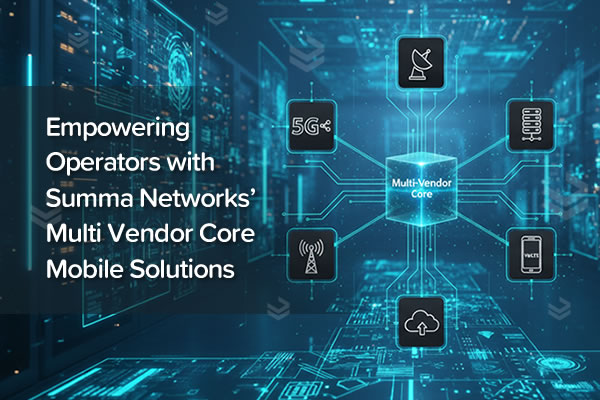The latest news and insights

AI and Telecom Networks: A Symbiotic Evolution Shaping the Future
Artificial Intelligence (AI) is no longer a futuristic concept in the telecom industry—it’s a reality reshaping networks from the inside out. AI is optimizing network efficiency, reducing operational costs, and opening new revenue opportunities for operators. But how exactly is AI transforming telecom networks, and what does this mean for the industry’s future?
According to the latest GSMA Intelligence report on Telco AI (Q1 2025), AI is playing a dual role in the industry:
- AI for Networks – optimizing network traffic, reducing energy consumption, and improving efficiency.
- Networks for AI – building smarter infrastructures that enable AI-driven services and new business models.
This article explores how these two dynamics are shaping the telecom sector and what lies ahead.
AI for Networks: Smarter, More Efficient Operations
The explosive growth of 5G, AI applications, and cloud services is driving an unprecedented increase in network traffic. Cellular data usage is expected to triple by 2030, creating new challenges for telecom operators in managing bandwidth, energy efficiency, and service quality.
Managing Traffic and Bandwidth Demand
AI is becoming an essential tool for intelligent traffic management. AI-powered solutions help networks dynamically adjust to traffic surges, ensuring optimal performance without compromising service quality. Key AI-driven strategies include:
- Traffic Routing & Load Balancing – AI predicts network congestion and reroutes traffic in real time.
- Predictive Maintenance – AI identifies network failures before they happen, reducing downtime.
- Self-Healing Networks – AI automatically detects and resolves issues without human intervention.
AI and Energy Efficiency: A Critical Priority
One of the biggest challenges in telecom networks is energy consumption. The Radio Access Network (RAN) is the most energy-intensive component of telecom infrastructure, consuming 76% of total network energy. AI-driven energy optimization is now a key priority, with solutions such as:
- AI-powered RAN controllers that optimize energy usage dynamically.
- Smart traffic steering that directs traffic to energy-efficient paths.
- Automated network shutdowns during low-demand periods to save power.
These advancements are helping operators cut energy costs while meeting sustainability goals, an increasing priority for the industry.
Networks for AI: Building a Future-Proof Infrastructure
AI is not only optimizing networks—it is driving the need for new infrastructure that can handle the demands of AI-powered applications. The rise of edge computing and AI inference at the network edge is enabling faster, more efficient AI services across various industries.
AI at the Edge: Lower Latency, Higher Efficiency
With AI-driven applications such as autonomous vehicles, industrial robotics, and real-time analytics, networks must support faster processing with lower latency. Edge computing plays a critical role here by:
- Processing data closer to the user instead of relying on distant cloud servers.
- Reducing bandwidth costs by keeping data local instead of sending it back to centralized data centers.
- Enhancing security by minimizing data exposure in transit.
As AI-powered workloads increase, edge computing and network slicing will become essential for operators looking to offer premium AI-driven services while maintaining efficiency.
Monetizing AI: New Revenue Models for Operators
AI is not just an operational tool—it’s also a business opportunity. Forward-thinking operators are leveraging AI to unlock new revenue streams, including:
- GPU-as-a-Service – Offering AI compute power to enterprise customers.
- AI Model Licensing – Selling AI-powered analytics and network optimization tools.
- Localized AI Infrastructure – Providing secure, compliant AI processing at the edge.
By integrating AI strategically, operators can transform their networks from cost centers into revenue-generating assets.
The Future: AI-Powered, Adaptive, and Sustainable Networks
AI is redefining how telecom networks operate and evolve. From intelligent traffic management to energy-efficient RAN solutions and edge computing, AI is becoming a fundamental pillar of the telecom ecosystem.
As data demand grows and AI applications expand, operators who embrace AI-driven optimization and monetization strategies will gain a significant competitive advantage.
🚀 The telecom revolution is AI-powered—are networks ready?
Latest Blog

Empowering Operators with Summa Networks' Multi Vendor Core Mobile Solutions


